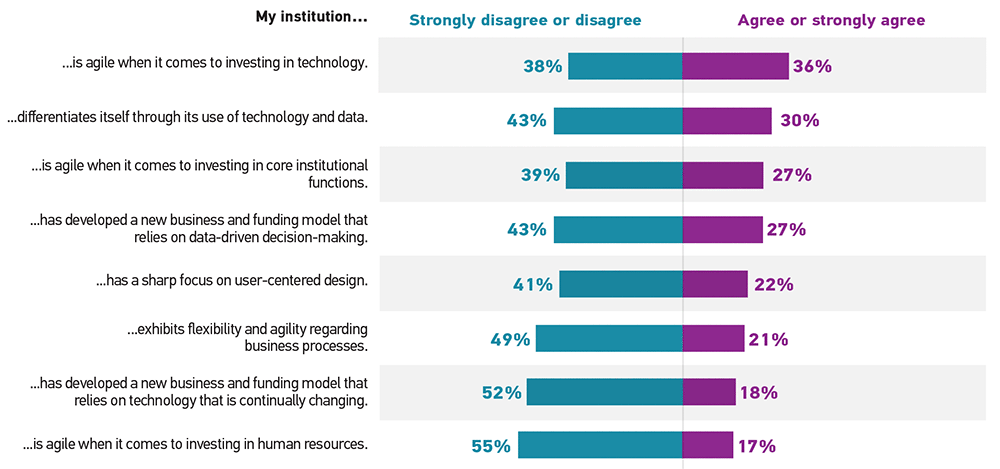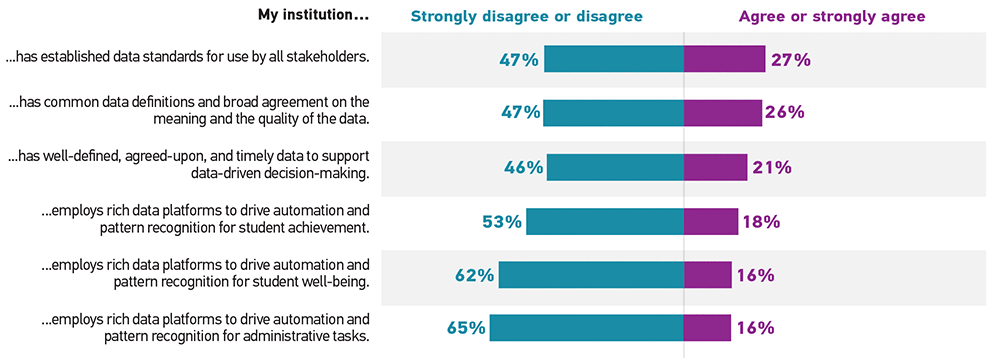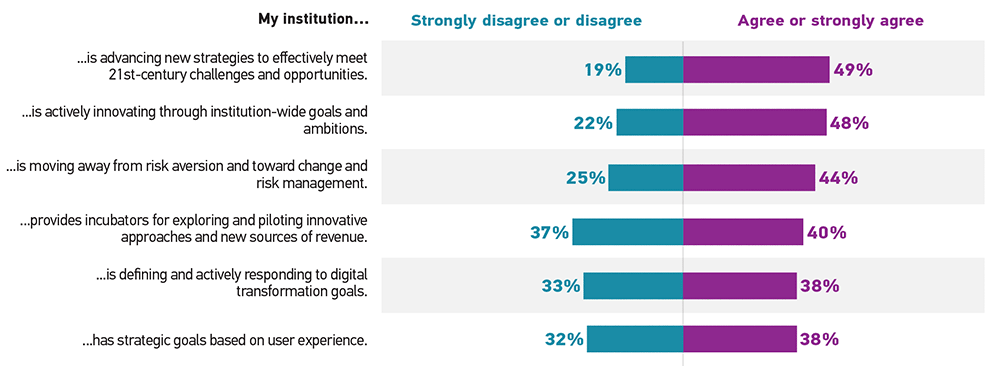Digital Transformation: Culture Shifts
Various culture shifts signal the presence of and engagement in Dx at an institution. The Dx culture shifts identified below are being adopted at a plurality of responding institutions. It is important to note that nearly all trends and aspects of Dx have a sizable percentage of institutions currently moving forward…with others already lagging behind.
What Are Institutions Doing?
Campus leaders are emphasizing coordination and alignment on institutional goals; leaders are also effectively embedding IT into institutional priorities and promoting a culture of trust supported by data (see figure 1).

Institutions are demonstrating agility and flexibility in their use of technology and in their institutional directions (see figure 2).

Institutions are relying on data and analytics for tracking progress on goals, making institutional course adjustments, and driving business management and decisions (see figure 3).

What Areas Are Opportunities for Improvement?
Campus leadership is struggling to rapidly respond to changing circumstances and new opportunities and to enable a seamless student experience (see figure 4).

Institutions are sluggish when it comes to investing in human resources. Many colleges and universities eschew data-driven business and funding models, continuing instead to deploy traditional business processes that are rigid and unresponsive (see figure 5).

Institutions are lagging in their employment of data platforms, specifically in the areas of administrative tasks, student well-being, and student achievement (see figure 6).

Are the Necessary Supports in Place?
Higher education institutions are:
- Advancing new strategies to effectively meet 21st-century challenges and opportunities,
- Actively innovating through institution-wide goals and ambitions, and
- Moving away from risk aversion and toward change and risk management (see figure 7).
